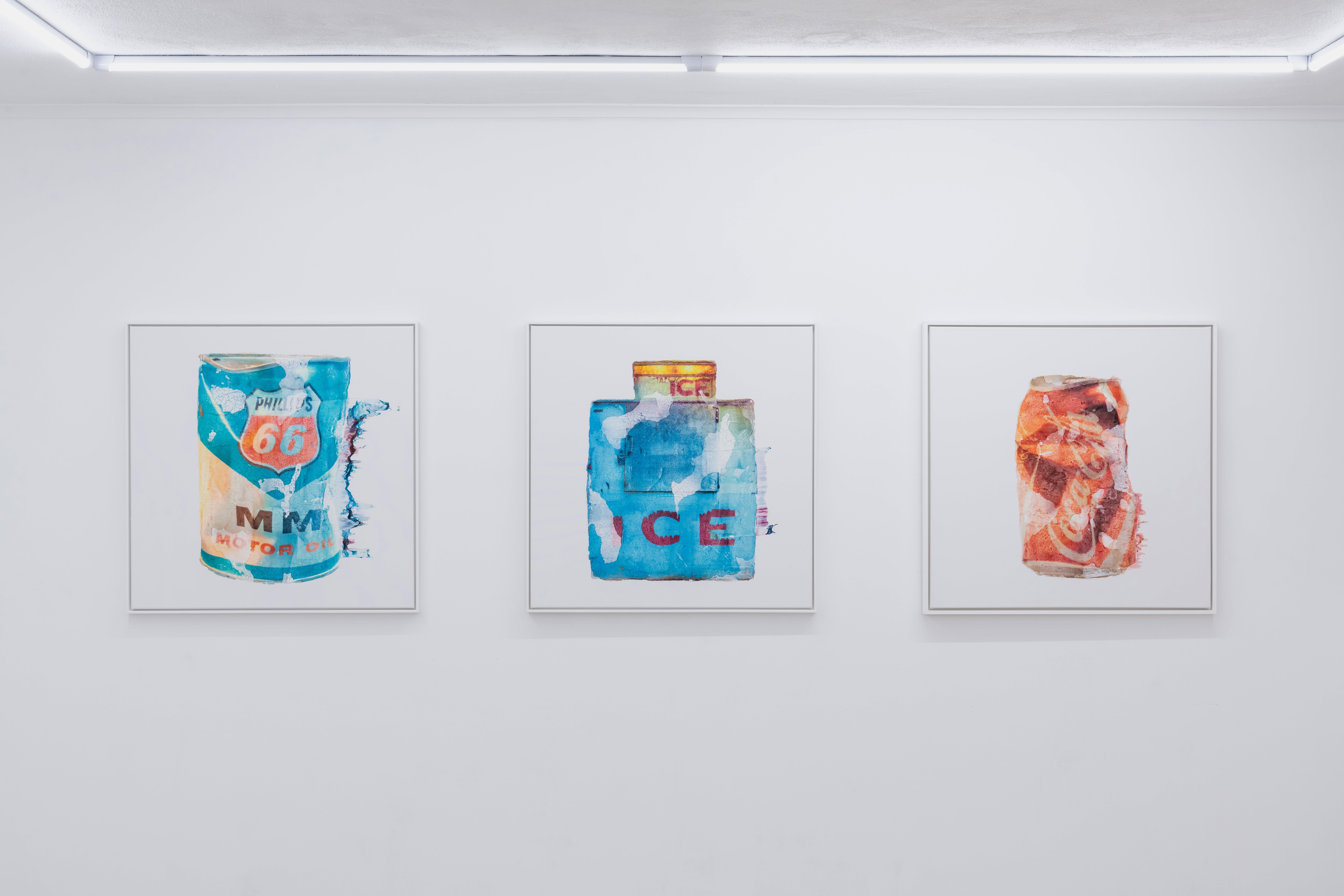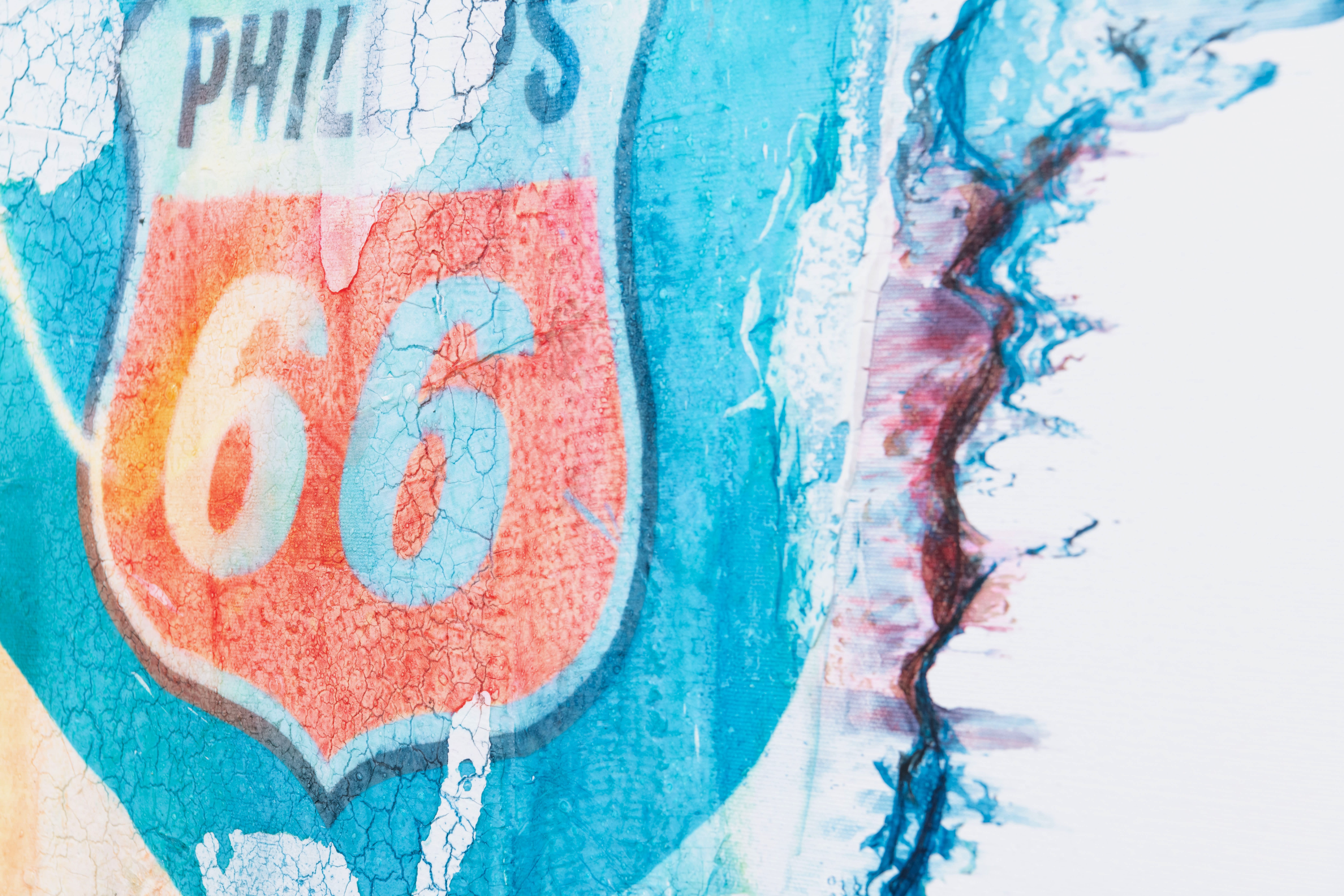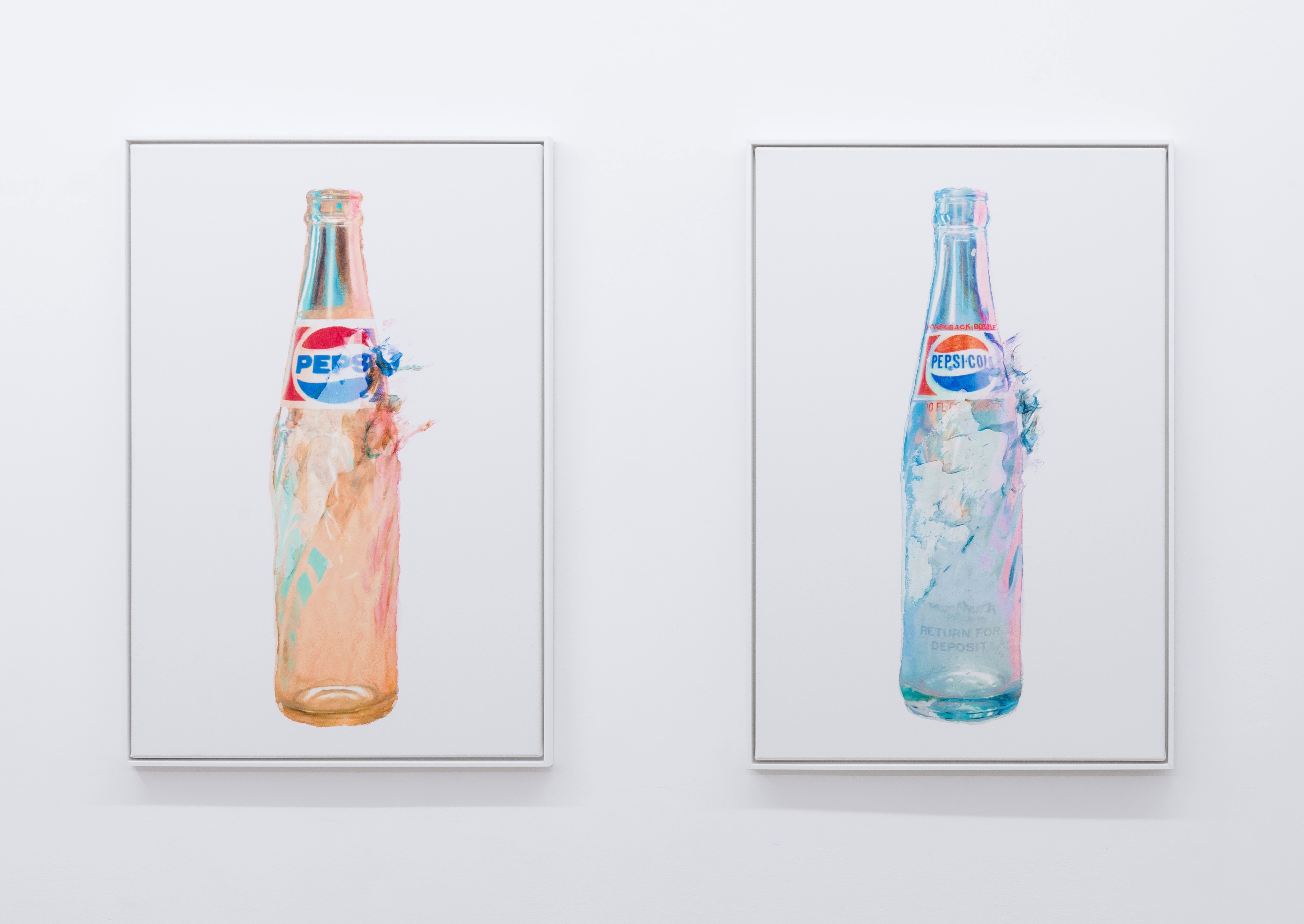
On the occasion of the group exhibition Traces, gallery manager April Dell chatted to exhibiting artist Ali Eckert about the nostalgic imagery in his works and his signature technique for creating the textures and special effects that spark this emotion. Traces runs from January 31 – April 12, 2025.
April Dell: Nostalgia is a strong current in your work. How does your dual American-German identity inform how you depict the distinctly American pop culture and iconography in your art?
Ali Eckert: As a German-American living and working between both countries, I have a different perspective on American culture: not as a native, but also not as a foreigner.
Growing up, I was strongly influenced by American pop culture. The product design, the fashion, American punk rock and their fanzines, and certainly American movies had a strong impact on me.
Since I was a kid, I have spent my summers at my family’s lake cabin in Wisconsin. The town is a small and cozy rural town, very typically American. It is not totally familiar to me. That is probably why it inspires me so much - the architecture, the way the streets are laid out, the design of everyday objects, the vending machines, the ice boxes. Everything is a visual explosion. All this American imagery trickles down and gets filtered by my background.
My ‘Vanishing Icons’ and ‘Skinned Bottles’ series depict iconic everyday objects that reflect American culture, particularly the American dream. The objects appear to be vanishing or fading. I conserve their current status, in a time of cultural transition.

Ali Eckert, 'Vanishing Icons' series, installation view, Traces group exhibition, Ronewa Art Projects, Berlin, 2025. Photo by Jeremy Knowles.
AD: These works evoke decaying artifacts of a bygone era or memories of objects dissolving with time. How do you achieve this effect?
AE: Firstly, I photograph every object or element of scenery you see in my work. I then construct the image like a film architect, editing and putting all the pieces together.
Once I have my final image, I print it onto a transparent foil. The image then gets transferred onto my working material using various manual processes. The wet pigments get brushed, squeezed, or wiped from the foil - there really are no limits to this transferring process, and I may transfer an image several times in one work.
Now on the canvas, the treatment goes on: brushing, smearing, scratching, adding color, diluting the pigments with liquids, creating texture with paint. This part of the process is very intuitive and spontaneous. The surface becomes very sensory, and this is what draws you in.

Ali Eckert, 'Phillips 66 (Orange)', detail view, mixed media on canvas, 80 x 80 cm. Photo by Jeremy Knowles.
AD: You have a history in advertising and filmmaking. How has this influenced your artistic practice, particularly your approach to storytelling?
AE: With a background in photography and a master’s degree in visual arts, I went into the advertising industry as a camera director, then into filmmaking as a scriptwriter and feature film director. I think I can say I’m a very visual person and have a passion for storytelling.
I am a great fan of David Lynch. He creates a microcosmos and builds mystery under the surface. In my visual art, I like to create stories that extend beyond the image frame, stories that are never clear or precise, but where you feel a tension. I leave visual traces that you can jump on, but it is the emotion that carries you into the picture.

Ali Eckert, 'Skinned Bottles' series, installation view, Traces group exhibition, Ronewa Art Projects, Berlin, 2025. Photo by Jeremy Knowles.


Add a comment